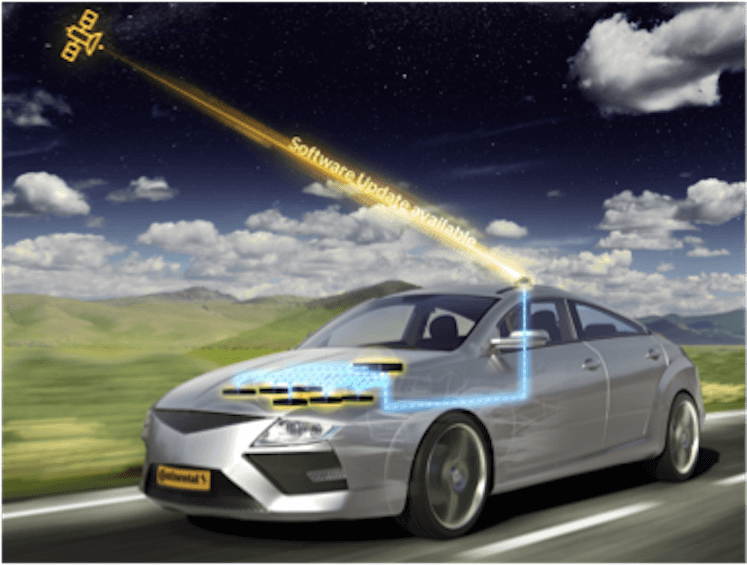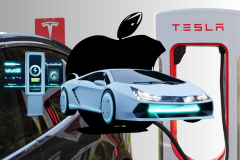The market for wireless connected devices is exploding. We know this. From garage doors to refrigerators to healthcare devices to alarm systems to pet products, it’s reasonable to expect that nearly everything we purchase in the future will have a chip and a platform. How functional, viable and useful many of these devices will actually become in our day-to-day lives, however, is still up for debate.
Debated less are the revenue opportunities associated with the connected device we use with the greatest frequency – our cars. The latest research suggests the connected car market will grow to just shy of $60 billion by 2021. GM alone already has 12 million connected cars on the road today.
See also: Are connected cars only as good as your network?
From infotainment to in-car Wi-Fi, the revenue possibilities are tantalizing and manufacturers are already seeking to capitalize. And while these services are certainly marketable to the consumer and potentially allow brands to distinguish themselves in a hotly competitive market, they are not necessarily transformational to the bottom line.
The greatest revenue opportunities for manufacturers will come from the ability to conveniently service their fleets of vehicles from afar and own the relationship with the car owner long after the new car has been driven off the lot.
100 million lines of code
Today’s personal vehicle typically has over 100 million lines of software code. By comparison, the F-22 fighter jet has just 1.7 million. As is the case with your laptop computer, updates are required quite frequently to enhance performance and security.
Today, each time an update is required, it means a trip to the dealer for the owner where hot coffee, free Wi-Fi and a usually longer than anticipated wait time awaits. If the manufacturer could instead update a connected vehicle’s internal software remotely over-the-air, the cost savings associated with warranty support and recalls would be dramatic. Certainly, the owner would appreciate a reduction in the number of annoying trips to the service station.
This all sounds great in theory, but making it practical and realistic depends on access to a reliable and cost-efficient network. For early days connected services, manufacturers are relying primarily on terrestrial networks. But for the more advanced type capabilities such as OTA updates, satellite communications needs to be in the mix.

It’s true; satellite communications has never been considered mainstream. It’s often thought of as a last resort due to costs, speed challenges and size of equipment. But things have changed, and satellite will be a strong player within the 5G “network of networks” as costs have come down and hardware has been reduced to the point where they can be embedded quite easily into any number of devices, including the automobile.
Network reach is what rules
Why does satellite have such an upside in the connected car arena? Let us count the ways.
First, satellite’s broadcast capability makes it ideal for shooting out a single update to an entire fleet of vehicles at once via a single transmission. Does GM want to send one message to its 12 million connected cars or 12 million to each individual car? The efficiencies of satellite broadcast would save OEM’s millions in network usage costs.
Second, while AT&T and Verizon may claim to be everywhere in the US, they are certainly not everywhere in the world. Satellite networks, on the other hand, are. They are global in nature, have much larger footprints and can reach a vehicle anywhere. Using a satellite network will eliminate the need for OEMs to negotiate and manage tricky international roaming agreements.
Third, the advent of all these connected devices has also resulted in a much larger playground for hackers with nefarious intentions. While no network can claim to be completely impervious, the topology of a satellite network is inherently more secure as it operates as a private network that does not traverse the public Internet where there is a greater likelihood of intrusion. With encryption technologies layered on top, satellites can offer even stronger protections for users.
Finally, once the vehicle is connected to the satellite network – and the latest componentry now allows for easy embedding into shark fin antennas and internal control units – the potential then emerges for OEM’s to introduce, upsell and cross-sell a host of services that not only deliver new revenue streams but also allow for an enhanced relationship with the vehicle owner, something they have always craved.
As the connected car market matures and education of satellite’s inherent advantages continues, expect to see satellite emerge as the preferred method of connectivity and the key component that will not only drive down costs for OEMs but truly transform the relationship between the automaker and car owner.
The author is Vice President, Strategy & Business Development for Inmarsat’s Connected Car Program of Inmarsat’s Connected Car division, which is working with automotive suppliers and manufacturers to bring satellite connective to the next generation of connected vehicles.






















